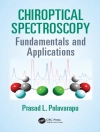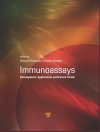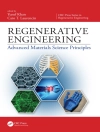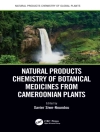Inhaltsverzeichnis
Historical Aspects of Xeroderma Pigmentosum and Nucleotide Excision Repair.- Clinical Features of Xeroderma Pigmentosum.- Xeroderma Pigmentosum and Skin Cancer.- XPA Gene, Its Product and Biological Roles.- XPB and XPD between Transcription and DNA Repair.- XPC: Its Product and Biological Roles.- The XPE Gene of Xeroderma Pigmentosum, Its Product and Biological Roles.- XPF/ERCC4 and ERCC1: Their Products and Biological Roles.- XPG: Its Products and Biological Roles.- Xeroderma Pigmentosum Variant, XP-V: Its Product and Biological Roles.- Other Proteins Interacting with XP Proteins.- The Nucleotide Excision Repair of DNA in Human Cells and Its Association with Xeroderma Pigmentosum.- Roles of Oxidative Stress in Xeroderma Pigmentosum.- Xeroderma Pigmentosum: Its Overlap with Trichothiodystrophy, Cockayne Syndrome and Other Progeroid Syndromes.- Population Distribution of Xeroderma Pigmentosum.- Progress and Prospects of Xeroderma Pigmentosum Therapy.- Animal Models of Xeroderma Pigmentosum.
Über den Autor
Sham im I. Ahma d is a Senior Lecturer at Nottingham Trent University, Nottingham, England. After obtaining his MSc from Patna University, India, and his Ph D from Leicester University, England, he joined Nottingham Polytechnic which subsequently became Nottingham Trent University. For about three decades he has been working in the field of DNA damage and repair particularly on Near UV photolysis of biological compounds, production of free radicals and their implications on human health including skin cancer and xeroderma pigmentosum. Also compounds inducing double strand DNA damage, 8-methoxypsoralen +UVA, mitomycin C, and nitrogen mustard have been under investigation including their importance in psoriasis treatment and Fanconi anemia. Additional research included: thymineless death in bacteria, genetic control of nucleotides catabolism, development of anti-AIDS drug, control of microbial infections of burns, phages of thermophiles and microbial flora of Chernobyl after the accident. In 2003 he received a prestigious “Asian Jewel Award” in Britain for “Excellence in Education”. He is also the Editor of the book, Molecular Mechanisms of Fanconi Anemia, published by Landes Bioscience.
Fumio Hanaoka is a Professor at the Graduate School of Frontier Biosciences, Osaka University and the Program Leader of the Solution Oriented Research for Science and Technology of the Japan Science and Technology Agency, Japan. He received his undergraduate and Ph D degrees from the University of Tokyo and did his Postdoctoral at Mc Ardle Laboratory for Cancer Research, University of Wisconsin, Madison, USA. He joined the University of Tokyo in 1980 and in 1989 moved to RIKEN Institute as the Head of the Radiation Research Laboratory. In 1995, he joined the Institute for Molecular and Cellular Biology (now known as Graduate School of Frontier Biosciences), Osaka University. His main research interests include the molecular mechanisms of DNA replication and repair in eukaryotes. He served as the President of Molecular Biology Society of Japan (2005-2007) and has been serving on several editorial boards, including Journal of Biological Chemistry and Genes to Cells.












